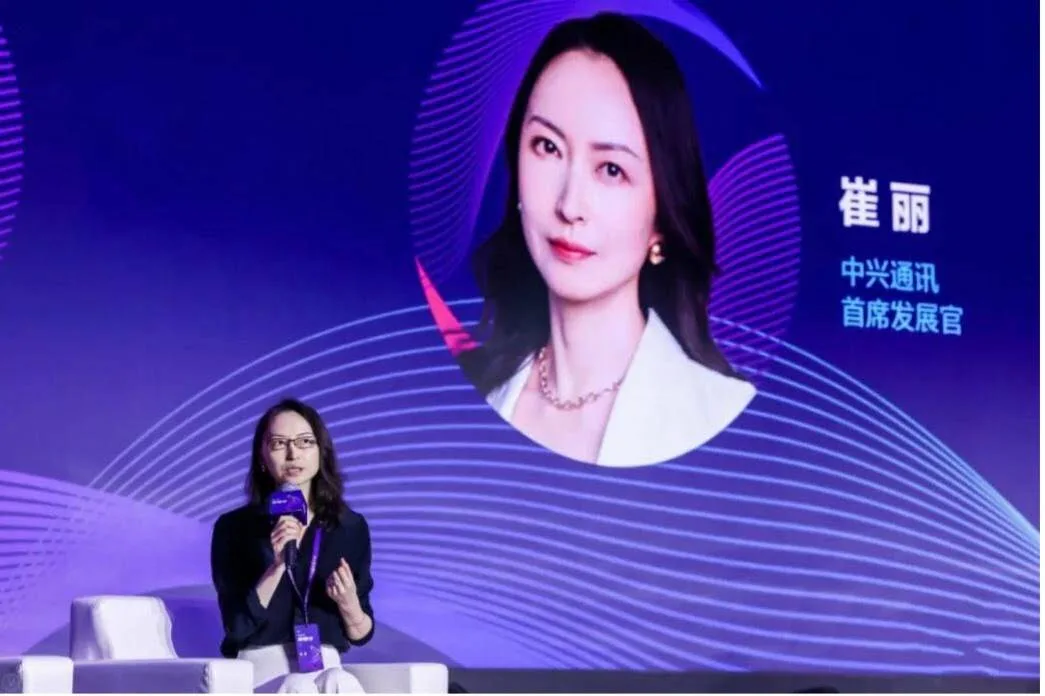ZTE Corporation (0763.HK / 000063.SZ), a major international provider of telecommunications, enterprise and consumer technology solutions for the mobile internet, today announced that ZTE’s Chief Development Officer, Cui Li, has delivered a speech on Embracing a New Era with Digital Service Providers at the ZTE Global Analyst Conference.
With the growing demand for data services, many public cloud providers and telecom operators are vigorously delivering cross-border innovations, expecting to seize the new opportunities in the early stages of a new surge in the digital economy. ZTE believes that further consolidating the digital foundation combined with digital service features will effectively help operators realize the transformation from traditional communications service providers to future digital service providers, while also accelerating the digital and intelligent transformation of society.
“ZTE expects to combine digital foundations with enhanced connectivity, enhanced digital capabilities and digital transformation of industries, thereby helping operators to digitally transform, better embrace the digital era and stay ahead of future competition, while creating value and conquering the future. “Ms. Cui said.
Digital transformation is an inevitable trend and enterprises need to take the initiatives
“Digital transformation is now an inevitable trend. Taking the lead in digital transformation will definitely bring us digital dividends and competitive edges,” Ms. Cui stressed. “The era of digital services will be the beginning of a new round of competition for the incremental market.”
From a macro-environment perspective, first, the digital economy has already become a major driving force for high-quality economic growth and we need to follow the trend. Second, growing uncertainties in the global environment are forcing companies to improve their ability to protect themselves from risk. Third, people are more aware of the importance of environmental protection and sustainable development, and digital transformation is the key for major countries to achieve carbon neutrality goals.
And from the perspective of the market, as traditional communication services have hit a revenue ceiling, the digital service market characterized by cloud-network synergy is gradually opening up.
According to Ms. Cui’s analysis, firstly, in the post-pandemic era, smart home has become a new scenario that integrates work, education and entertainment. The development of smart home applications such as 4K / 8K video and VR / AR will drive rapid market growth. Second, the Intelligent Internet of Everything (IIoE) is driving the explosive growth of connected terminals. Processing large amounts of data places greater demands on networking capabilities and ubiquitous computing power.
Thirdly, regarding cost-effective integrated ICT solutions, instead of building data centers by themselves, enterprise customers are more willing to turn to digital service providers (DSPs) for professional integrated services at lower costs, so that they can focus more on business improvement. Also, providing integrated services for the digital transformation of traditional industries will bring new growth opportunities for operators.
Ms. Cui believes that, given the great opportunities for growth in the digital services market, transforming incumbents from telecoms to digital service providers is a necessary option to increase their competitiveness.
From a technological development perspective, emerging new technologies and evolving digital technologies in recent years have laid a solid foundation for digital services, e.g. clouds, digital twins and AI, and Zero Trust architecture for data security and cybersecurity.
Among so many technologies, how should operators make choices and apply them effectively? Cui Li believes that the decisive factor is “the value that a technology can create”. She suggests following three principles. The first principle means creating value for customers, indicating to focus on technological integration, decoupling of capabilities, ecological openness and fundamental security.
The second refers to forward-looking implementation, which means addressing rapid technological evolution and gaining competitive advantages in future key technologies. The third is Differential Development, which means giving full play to the advantages in the main business and refraining from not doing, so as to play a key role in the ecosystem of value in the future.
Integrating networks, clouds, and industries assists operators in staying ahead in future competitions
After analyzing the macro environment, market and technology trends, Ms Cui said: “Operators should start transforming from CSP to DSP now. With their existing advantages, operators can build a solid digital foundation that integrates networks, clouds and industries, thus staying ahead of future competitions. ”
Networks are the basis for the Internet of Everything, while the distributed cloud can provide computing power anytime and anywhere. By combining big data technology with networks and distributed cloud, we can achieve data collection and integration.
What’s more, thanks to AI technology, we can implement high-dimensional perception and intelligent decision making. In the case of industries, the key is to deliver customer-centric digital services tailored to different industries. In other words, to meet the needs of different customers, we need to flexibly integrate basic network and cloud capabilities to provide cost-effective, user-friendly digital services. It makes a difference.
“With network-cloud-industry synergy, operators can effectively drive the digital transformation of verticals as well as the ToC, ToH, and ToB business, thereby taking a leading position in the digital era,” stressed Ms. Cui.
Enhance network capabilities. We keep emphasizing the improvement of network capabilities, namely, to explore resources and reduce costs. Specifically, we should seek continuous innovations and breakthroughs in ultimate experience and efficiency.
The final experience focuses on “resource exploration”. In order to be successful in the market, it is necessary to provide customers with completely new experiences. For example, individual consumers expect full network coverage at high speed, while home users expect a better experience based on multi-screen display, smart apps and immersive interactions, and industry customers demand high uplink bandwidth, URLLC applications as well as fine grain hard slicing.
Most importantly, customers are willing to pay for these brand new experiences that bring them greater value.
As for ultimate efficiency, the key is cost reduction. We strive to make continuous breakthroughs in spectral, operational, and power efficiency, to lower costs and improve overall efficiency.
Next is to expand digital capabilities. It’s suggested that operators focus on optimal resource efficiency and edge-driven applications to promote the expansion of digital capabilities in the new era.
As we can see, enterprises are advancing digitalization of production to improve efficiency. To meet requirements such as ultra-low latency and data security, a large amount of data will be processed at the edge. Therefore, the edge will become a field with fierce competition for innovation.
From “Center Cloud” to “Distributed Cloud”, first, telecom operators should take their existing advantages to achieve low-cost startup and agile deployment at the edge. For example, they have strong infrastructure networks, massive distributed sites and the data center, and provide customers with agile and tailored local digital services and maintenance services. Then, it’s suggested that operators give full play to their advantages in ICT as well as hardware-software convergence for edge-driven middle platform reconstruction, to ensure higher resource efficiency and provide stronger support for fast innovations at the edge.
“Edge-driven middle platform reconstruction” is to employ finer-granularity components horizontally, and build a thinner PaaS layer to enable vertical decoupling of the technical service layer and general service layer. Such an architecture enables dual circulations. Through highly efficient hardware and software coordination, the technical service layer and the IaaS layer provide effective support for the upper application layer.
This architecture also guarantees optimal resource efficiency, which can be achieved through the synergy between the overall service layer and the application layer. In particular, thanks to the low-code architecture, the overall service layer enables agile development of the top layer of the application. At the same time, public logic and algorithms gathered from the application layer can be used to resolve conflicts between customization and scaling, thus facilitating the sustainable development of operators.
With enhanced network capabilities and expanded digital capabilities, conditions are ripe for digital transformation of industries. The most important is to remain value-oriented and scenario-driven when tailoring digital services for vertical industries.
It is a target to develop underlying network and cloud capabilities by general core technologies. On this basis, such capabilities can be flexibly integrated for various industries, enterprises, scenarios, and applications, and more importantly, for application innovation and incubation.
At the end of her speech, Ms. Cui concluded: “With the near future, there are opportunities and challenges in the digital age. ZTE is committed to the integration of networks, clouds and industries in order to consolidate its position in the industry and to facilitate the digital transformation. ”The operator in order to embrace the digital age and achieve win-win successes with all partners. “







